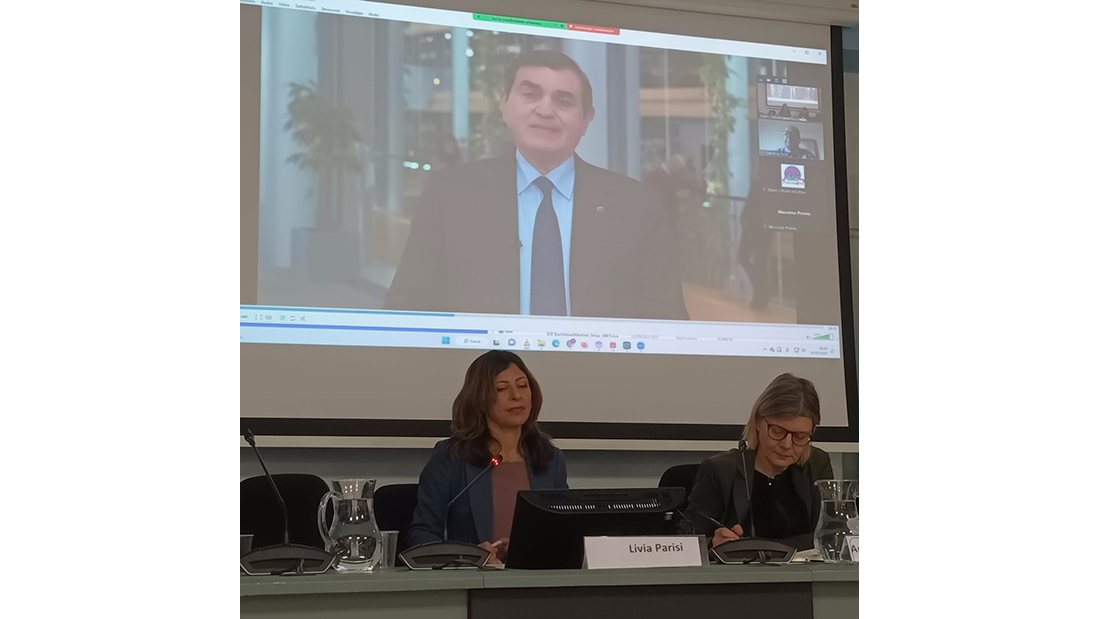From Bolzano to Caltanissetta, health worker shortages run across Italy. At risk are the peripheral and ultra-peripheral inner areas. Presented today an analysis by Cittadinanzattiva on the phenomenon of " medical deserts " in Italy and the measures planned by the NRRP.
Health workers wanted throughout Italy: from the North to the South there is a shortage of doctors, both GPs and hospital doctors, as well as nurses and pediatricians. Particularly in peripheral and ultraperipheral inner areas, so-called medical desertification is evident, i.e., territories where people find it difficult to access care due to, for example, long waiting times, a shortage of health care workers or long distances from the point of care delivery. And the risk is that the problem will not be solved by the funds made available by the NRRP. In fact, only 16-17 percent of Community Homes and Hospitals will be built in these areas. Overcrowding in the offices of general practitioners and pediatricians is especially evident in the North of the country, while the shortage of hospital gynecologists affects not only Caltanissetta, where there is one hospital gynecologist for every 40,565 women, but also Macerata, Viterbo, La Spezia and three provinces in Calabria (Reggio Calabria, Vibo Valentia and Cosenza). These are some of the data from the Report presented today by Cittadinanzattiva, during the event "Health needs in inner areas, between medical desertification and NRRP", held in Rome at the European Commission Representation in Italy.
The Report, which also contains specific regional focuses, can be downloaded at this link.
Going into detail, Asti and its province have the fewest pediatricians per number of children (each professional cares for 1813 children between the ages of 0 and 15 years, the national average is 1/1061 and the regulations stipulate about 1 pediatrician per 800 children). In the province of Bolzano, each general practitioner cares for an average of 1539 citizens aged 15 years and older (the national average is 1 doctor per 1245 patients, although the regulations set this ratio at 1/1500). In Caltanissetta and its province there is one hospital gynecologist for every 40,565 women (the Italian average is 1/4132), the best figure is in Rome with a ratio of 1/2292: in other words, the situation in the province of Caltanissetta is 17 times worse than for those living in the province of Rome. On the other hand, considering hospital cardiologists, the situation in the Autonomous Province of Bolzano is even 71 times worse than those living in the province of Pisa: in Bolzano there is one hospital cardiologist for every 224,706 inhabitants (the average is 1/6741), the best rate in Pisa and province with 1/3147. Regarding hospital pharmacists, however, the worst ratio is reported in the province of Reggio Emilia where there is one professional for every 264,805 inhabitants (the average is 1/26,182), the best is in the province of Forlì-Cesena with 1/9982.
Keeping in mind the 39 provinces where the imbalances, between number of professionals and citizens, are most marked, Lombardy (Bergamo, Brescia, Como, Lecco, Lodi, Milan) and Piedmont (Alessandria, Asti, Cuneo, Novara, Turin, Vercelli) lead with six provinces, followed by Friuli Venezia Giulia (Gorizia, Pordenone, Udine, Trieste) and Calabria (Cosenza, Crotone, Reggio Calabria, Vibo Valentia) with four provinces. They are followed by Veneto (Treviso, Venice, Verona), Liguria (Imperia, La Spezia, Savona) and Emilia Romagna (Parma, Piacenza, Reggio Emilia), with three provinces each, Trentino Alto Adige (both autonomous provinces of Bolzano and Trento) and Lazio (Latina and Viterbo).
The analysis conducted by Cittadinanzattiva used official data provided by the Ministry of Health related to 2020, regarding the following health care figures: pediatricians of free choice, general practitioners, gynecologists, cardiologists and pharmacists (the latter three hospitalists) for each Italian province. The initiative is part of the European project AHEAD "Action for Health and Equity: Addressing Medical Deserts" (funded by EU4Health, the European Union's fourth program dedicated to health in effect for the period 2021-2027), which aims to analyze the phenomenon of so-called " medical deserts" at the European level.
"From the press review of the last few days, we have news, for example, of the shortage of pediatricians in Cagliari, of general practitioners in Rescaldina and Legnano in the Milan metropolitan area, as well as in Palomonte and Pisciotta in Cilento, of radiologists to report Holter tests in Manfredonia, and of gynecologists in the hospital of Mirandola," says Anna Lisa Mandorino, secretary general of Cittadinanzattiva. "There is a lack of reliable, up-to-date and easily available data on the shortage of health professionals, and this does not facilitate the planning of interventions and the allocation of resources. The reforms also envisaged by the NRRP will be able to have the hoped-for effects, in fact, if the investment in facilities - community homes and hospitals first and foremost - is accompanied by an adequate investment in the workforce. Similarly, it is necessary to dislocate health spaces by strengthening the weak areas of the country and taking into account the nature of the territories and not just an arithmetic logic that looks only at the number of inhabitants. For this reason, on the occasion of the next European Patients' Rights Day, scheduled for April 18, we will promote a national and local mobilization in defense of the National Health Service and for a reform of territorial care that is truly tailored to the territories."
Inner areas: 508 Homes and 163 Community Hospitals planned in these territories. At risk of depletion are the outermost areas of Liguria and Valle D'Aosta.
The funds and projects envisaged by the NRRP would have the potential to reduce some historical gaps, such as that of territorial care in some areas of the country. For this reason, in the Report Cittadinanzattiva also analyzes how many Community Homes and Hospitals are planned to be built in the inner areas belonging to the 39 provinces where the shortage of health workers is most pronounced. But the results are not encouraging: out of 1431 Community Homes and 434 Community Hospitals planned by the NRRP, a little more than a third -- that is, 508 Homes, or 35.5 percent, and 163 Hospitals, or 37.6 percent -- will be built in inner areas. However, it is mainly the more than 5 million citizens living in the peripheral and ultra-peripheral areas of these areas who will be left almost unprotected: just 16 percent of the 1431 Homes and 17 percent of the 434 Community Hospitals are planned here. Even residents in the 13 peripheral and ultraperipheral municipalities of Valle d'Aosta and the similar 36 municipalities in Liguria will not have any of the two new types of territorial services envisaged in the National Recovery and Resilience Plan.
In total, for as many as 654,883 Italians living in peripheral and ultra-peripheral inner areas of 7 regions, no Community Hospitals are planned: these are Piedmont, Liguria, Valle D'Aosta, Trentino Alto Adige, Friuli Venezia Giulia, Umbria and Marche.
Friuli, Marche and Piedmont will each count only one Community House for the inner peripheral and ultra-peripheral areas of their regional territory: going into detail, 1 House is planned for the 43 municipalities of Friuli in these areas, where about 39,000 inhabitants live; 1 for the nearly 110,000 inhabitants of the 42 municipalities of Marche in inner peripheral and ultra-peripheral areas; 1 for the approximately 76,000 people living in the 131 municipalities of Piedmont located in these areas. On the other hand, the regions most benefited by the NRRP in terms of the number of Community Homes and Hospitals are, in order, Lombardy (199 Homes and 66 Hospitals), Campania (172 and 48) and Sicily (156 and 43).




